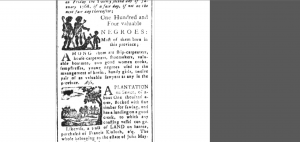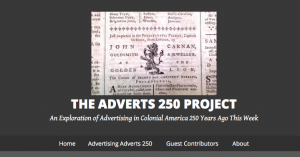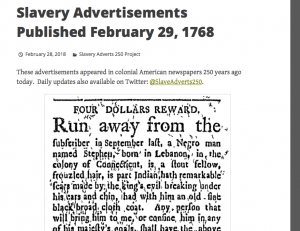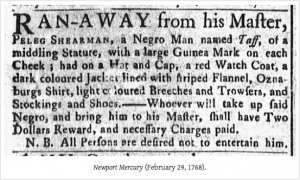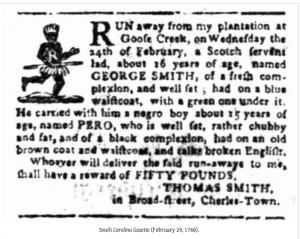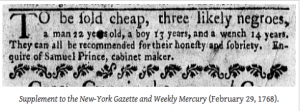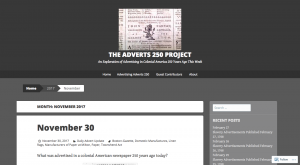What is this digital public history exhibit about?
This digital public history exhibit is an exploration of advertising in Colonial America (250 years ago this week!). They are showing what was advertised in history; interestingly enough a lot of the advertisements have to do with slavery and advertising slaves.
Who made it, and why?
Carl Robert Keyes, the associate professor of history at Assumption College in Worcester, Massachusetts created the Adverts 250 Project. He started this project to make this public history more accessible for everyone. Being a history professor, he is interested in spreading historical knowledge that people may have overlooked that help shape our nation. These advertisements show: what was being advertised, how it was advertised, and how this had impacts on our history.
What kinds of primary sources did you find?
I found newspaper clippings, and photographs during my search through of the website. The newspaper clippings look scanned in, and are interesting to read and view. Many of the sources are advertisements from newspapers because they did not have advertisements on Television or Radio 250 years ago.
Overall, what did the digital public history exhibit do well? What did it not do well?
This exhibit is aesthetically pleasing, and uploads often to the site. Every day they upload an advertisement from Colonial America, and an advertisement specifically regarding slaves each day. This blog however does not bring much of a discussion about by just looking at these advertisements. I feel as though the excerpts from newspapers could be explained or put into context more, and some of the pictures could have used a steadier hand so we could read the material easier. I think if there were articles or writings to go along with each advertisement to show why it is important for someone to look at it, the project and exhibit would be a better resource.
I think this is a good start to a public history exhibit, but it definitely could be more specific and educational for viewers.
Thinking about digital humanities more broadly, what is gained, and what is lost, when representing the past through this digital public history exhibit?
Accessibility is definitely gained through this project. I never would have thought, or had time, to access all of these advertisements from two hundred and fifty years ago. I think it is really accessible, and could be used as a resource when trying to find information about our Colonial Days. I really think the slavery advertisements are important and I do not know where else I could have accessed these ads other than this website. I do think the shock value may be lost a little bit because it is over the internet and just in digital form. It may have a more emotional impact if I could hold the newspaper clipping it came from, but seeing as these advertisements were from colonial America, that may not be an option any more.
Emily Hatch

